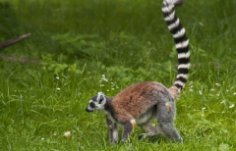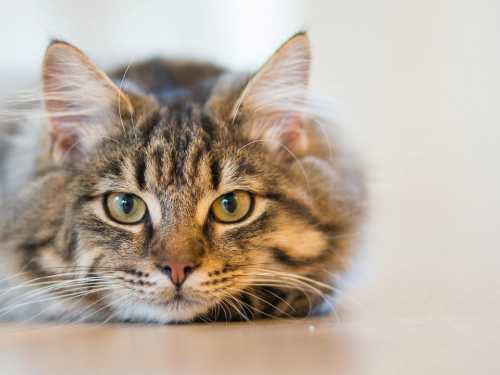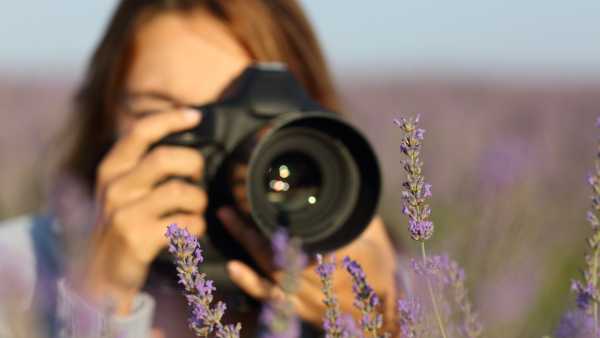
The tail plays a vital role in animal life. It serves mechanical, physiological, and communicative functions. Animals use it as resistance when jumping, sitting, and walking; as a rudder when swimming and flying; as an extra paw when climbing trees; and as a means of attracting a mate.
Among forest animals, the squirrel is best adapted to life in the trees. It climbs tree trunks well and can make long, drawn-out leaps. The squirrel uses its bushy tail like a parachute. When jumping from tree to tree, it spreads its tail, which supports it in the air and helps maintain balance.
Some animals use their tails to keep warm in the bitter cold. Curled up and covered with their tail like a woolen blanket, squirrels go to sleep when winter arrives. Their tails are almost as long as their bodies. Arctic foxes, foxes, martens, sables, snow leopards, and some other animals also use their tails.
A fox without a tail would be lost; the dogs would quickly catch her. But with a tail, the red fox would easily outwit them. She'd flick her tail to the right and run left, thus escaping pursuit. The fox uses its tail as a rudder, helping it turn faster.
The beaver is the largest living rodent, reaching approximately one meter in length. Its most distinctive feature is its distinctive, flattened tail, thickened in the middle. Its length reaches 25 centimeters. The beaver's tail not only serves as a rudder and paddle, but also helps its owner catch food. When gnawing on wood, the beaver sits on its hind legs, supporting itself with its tail. Upon sensing danger in the form of a predator, the beaver slaps the water with its tail—an alarm signal to all other beavers. They immediately dive underwater and hide.
The skunk often holds its tail erect; it is visible from afar and, together with the bright coloring of its back, serves as a warning to all potential enemies, who already know the skunk very well and prefer not to encounter it.
Lemurs prefer large horizontal tree branches, where they move quickly and easily, using their tails as balance beams. Sometimes, to frighten enemies, a lemur will stare forward with wide eyes and tuck its tail between its forepaws.
Squirrels, martens, sables, and some monkey species use their tails as a rope. Monkeys often hang from a tree by their tails, and in this position, they bring food to their mouths with their forepaws, hanging upside down, and pick fruit. After eating their fill, they can even swing on their tails, like on a swing.
A flexible spine, sharp claws, and strong hind legs aren't all a cat needs to successfully pounce on its prey. It also needs a rudder, which the tail serves as. When tailless cats were bred, their hind legs began to enlarge as a sort of compensation.
The tail is an important tool in animal communication. When a dog is frightened, it tucks its tail between its legs. However, when angry, a dog's tail curls up. When a dog is happy, it wags its tail. When two dogs meet, if one of them holds its tail high and moves from side to side, it means the dog means no harm but also believes it is stronger.
A cat expresses emotion with its tail in a completely different way than a dog. A “tail up” signifies a feeling of well-being. When the tail's owner is angry, it wags its tail.
Some animals can shed their tails for self-defense. If an enemy's teeth sink into a lizard's tail, it contracts its muscles and instantly breaks the spine at the site of the bite. The severed tail serves its owner for a long time – it can twitch for hours, thus distracting the predator's attention from the lizard itself. A new tail soon grows from the severed stump. Sometimes the tail simply breaks, after which a new one grows. Then the lizard becomes two-tailed, three-tailed, or four-tailed.
Some mammals have a similar ability. A chipmunk caught in the jaws of an enemy leaves a small skin sheath that slips off its tail. The wood mouse does the same.
Some animals store large reserves of fat in their tails. For example, lemurs, which live in Madagascar, use the fat stored in their tails during the dry season while sleeping. Jerboas and monitor lizards store excess fat at the base of their tails.
Cows and horses use their tails to fend off flies, mosquitoes, and horseflies, just like zebras and lions in Africa. Crocodiles use their tails for hunting. A blow from their tails can knock down not only small animals but also large ones. Birds use their tails as rudders or brakes. A doe's white tail helps her young keep track of their mother in the forest.
The tail is used differently by different animals. Some use it for flight, others for defense and attack, and others for movement—but they all need it.





